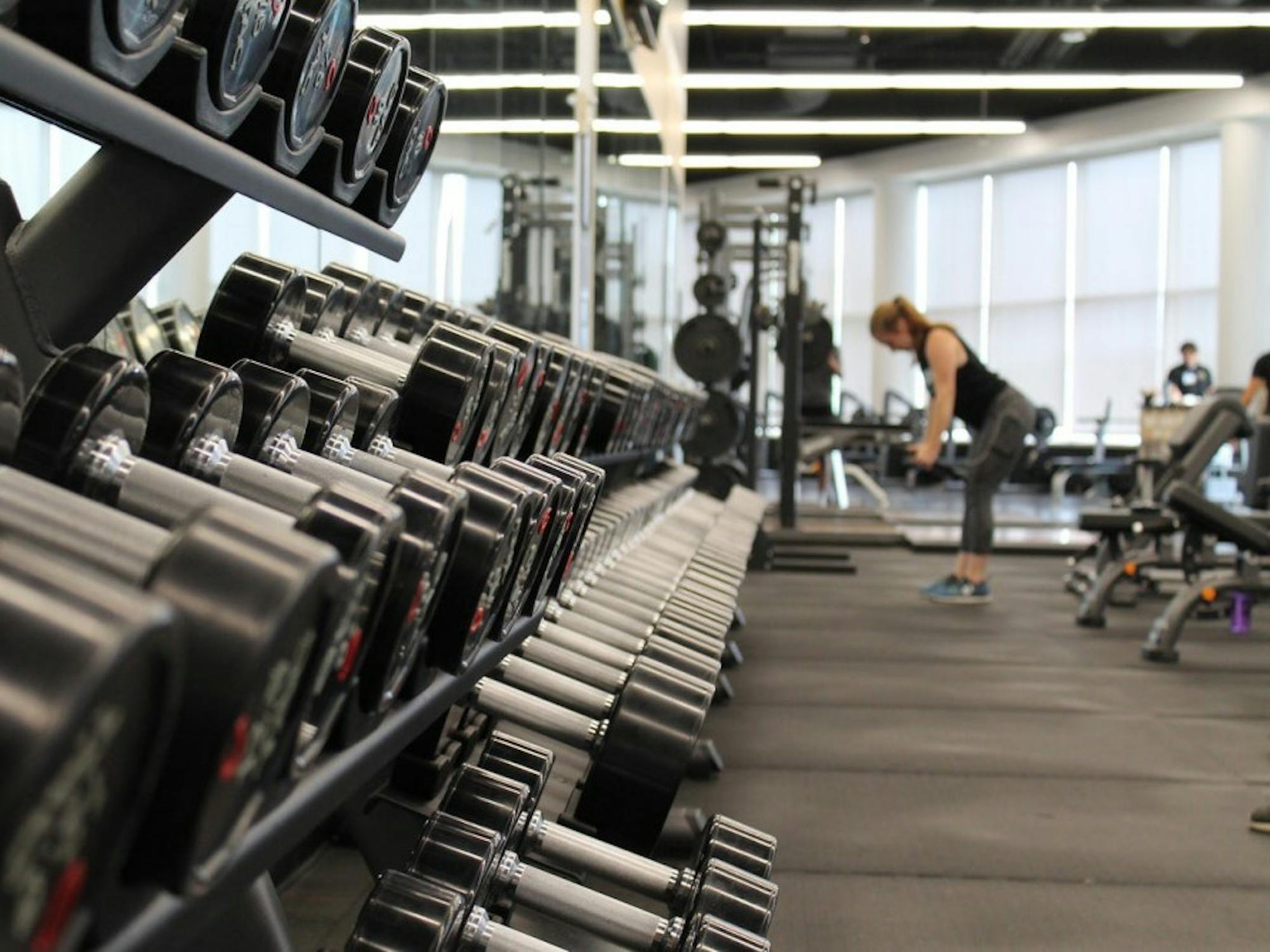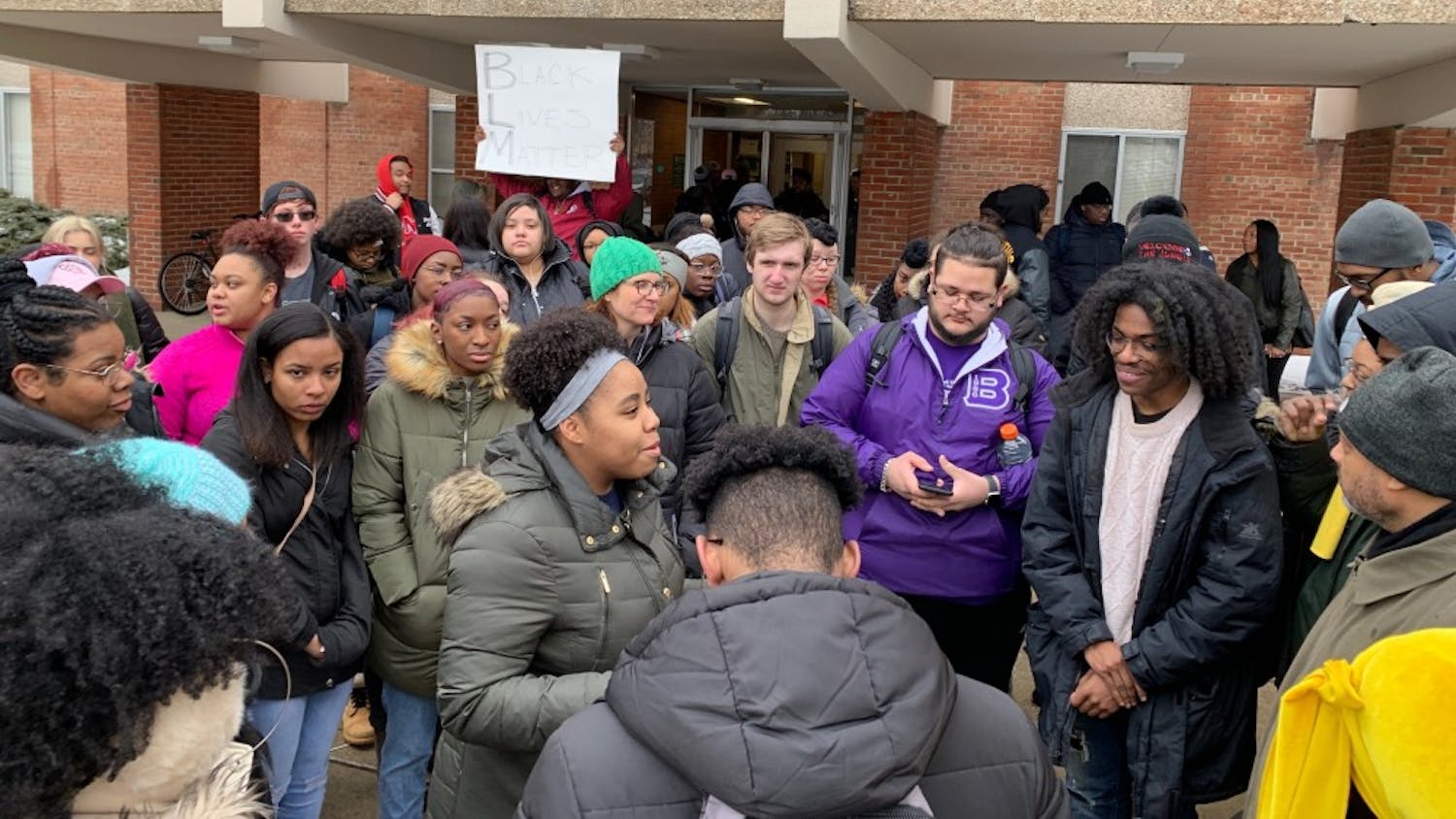You scroll through your social media feed; it could be Twitter or Instagram. Many topics and posts show up like comedy or news. A friend’s post enters position on your phone screen and it is a gym selfie. You might have seen them before.
They’re at the gym, showing their followers how they’re getting fit. It’s common now to post a selfie or video when you are at your workout. Some don’t feel a need to post at all. Parker Neal is a student at Central Michigan and says he hasn’t posted a picture of himself at the gym in a year.
“If I were to post something from the gym it’s honestly just me flexing and I think that’s the sole purpose of why anybody posts anything when they’re at the gym,” Neal said.
He refers to ‘flexing’ in a different way instead of actually flexing muscles. The term has its own online definition of showing off, in the bragging sort of way. In some circumstances, it’s just body positivity.
EMU student Camille Hamet says she posts every once in a while to her Snapchat or Instagram story.
“I don't really think I have a specific reason for doing it. Sometimes it's to show progress I've made, sometimes I have a funny caption, sometimes just because I'm feeling good about myself,” Hamet said.
That may be the most common reason, to spread body positivity. Hamet supports that trend. However, she has “mixed feelings” and believes there are bad sides to social media fitness.
“I think that recently fitness accounts on social media have gotten very popular and I don't think it's always a bad thing, but I think it can be. Some fitness accounts are just random people influencing others even though they may actually have zero idea what they're talking about,” Hamet said.
The most popular social media influencers have millions of followers. They post weekly, many even daily, videos and photos for their audience to like and comment on. The very top few on the list of most followed accounts are women.
Names like Michelle Lewin and Jen Selter have over 10 million followers and get hundreds of thousands of likes on a single post. They come up as fitness profiles when searching social media as they have established personal brands for themselves. Some accounts link to external sites where you can shop their own clothing lines and other merchandise.
“There are some accounts that I personally feel can be helpful when it comes to working out and learning new exercises. I don't think that working out should be so emphasized on social media because it can have a bad effect on people mentally. It can make some people feel like they have to look like all of these fitness models right away even though they are paid to spend time in the gym and have been working at it for years,” Hamet said.
Business Insider released an article on “the 50 best fitness Instagram accounts to follow in 2018”, giving a list of hardcore fitness profiles to lively yoga accounts. Many have small followings, in the range of 10,000 to 100,000. That is small compared to the people who have ten to one hundred times more.
Some of these accounts post more media of them in the gym. They show lifting on the bench press, curling dumbbells, and squat exercising.
Hamet says she follows fitness accounts “especially on Instagram,” but doesn’t take away much from them.
“I wouldn't say that they impact or influence my work out very much at all but sometimes when I'm interested in finding a new exercise for a specific muscle, I go to a fitness page for some examples.”
Carlos Osorio is a student at Henry Ford Community College. He finds that fitness influencers give a large range of ideas to his workouts.
“They do influence my workout sessions in some ways. They let me explore some different styles to my workout routines,” Osorio said.
Neal has a different view of fitness accounts on social media and has changed his way of seeing them online.
“Social media is an extremely toxic thing for people who aren’t comfortable with their own bodies,” Neal said. “I was an 18-year-old comparing my body to men who were in their mid-20s and on steroids. I don’t follow any general fitness accounts anymore because of that. They Photoshop their selves and do their absolute best to look the best but it makes a false perception on what they actually look like.”
Instead of following the popular influencers, Neal said he scaled down to only follow accounts he feels have more impact on him. He has been practicing mixed martial arts, which is more of a niche category on social media.
“I follow a couple of coaches and use their workout tips for my own personal workout,” Neal said.
Social media influencers and fitness accounts have a large platform, and they reach out in a variety of ways. Scaled down from them, everyone has their own reasons to get fit. Hamet, Neal, and Osorio have all said that their workouts relieve stress.
“I think that fitness as a whole is very important for everyone. I think it's important to find what is best for you so that you can stay healthy. Working out has greatly impacted me. It has shown me what my body can do when I push myself and has taught me that just because I'm a girl doesn't mean I can't lift weights,” Hamet said.
Neal used to take fitness to the next level, but has found steady ground when working out.
“I first started lifting to gain muscle mass to feel more confident about myself. For me, now fitness is keeping most of my current muscle mass and having good cardio,” he said.
Osorio feels that workouts have many benefits for his life.
“It gives me a vent to clear my mind let me improve upon myself. It has given me the opportunity to be the best version of myself, and it has taught me how to manage my time,” Osorio said.
Next time you have a session of scrolling through social media, count how many fitness posts you view. Think over if they influence your motivation to work out.









